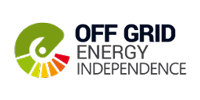
Lucid Motors Inc., the electric-vehicle startup that has yet to build a production car, is following Tesla Inc.’s footsteps into the energy-storage business.
The Newark, California-based company is developing home batteries — similar to Tesla’s Powerwall — and utility-scale devices, Chief Executive Officer Peter Rawlinson said in an interview. They will have the same battery-cell modules the company is installing in its debut EV.
“There is a multiplier effect: They are cost-effective to make,” so they can be used in stationary storage systems, Rawlinson said.
His comments came ahead of the unveiling Wednesday of the production version of Lucid’s Air electric sedan, which the company says has an EPA estimated range of 517 miles and claims is the fastest-charging EV ever. The Air also will have two-way, vehicle-to-grid charging that allows owners to power their homes in the event of a blackout.
The energy-storage systems are an extension of the same technology but may require lower-performance cells than the cars, Rawlinson said. Lucid has an agreement with LG Chem Ltd. for the cells in its battery packs. The company aims to have a prototype of a commercial system installed at its headquarters by the start of next year that will store power generated from solar panels on the facility’s roof and provide electricity during peak hours.
Lucid is also in preliminary talks with Saudi Arabia’s Public Investment Fund about an industrial-scale energy-storage system, Rawlinson said. The goal is that Saudi Arabia could store solar-generated power in Lucid’s batteries, helping the country to shift from dependence on oil and diversify its economy. The fund — which invested more than $1 billion in Lucid in 2018, giving it a much-needed injection of cash and credibility — declined to comment when asked about any energy-storage discussions.
read more







Recent Comments